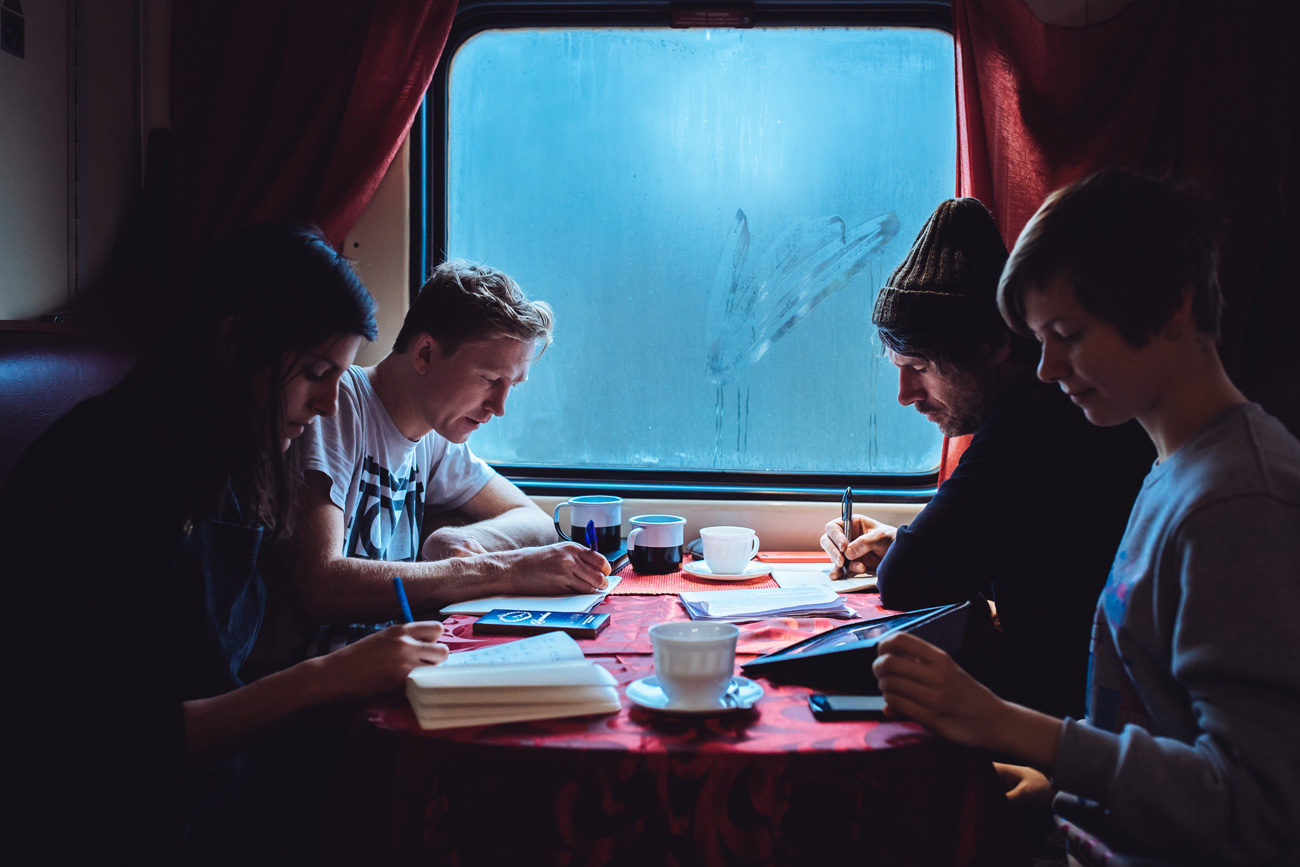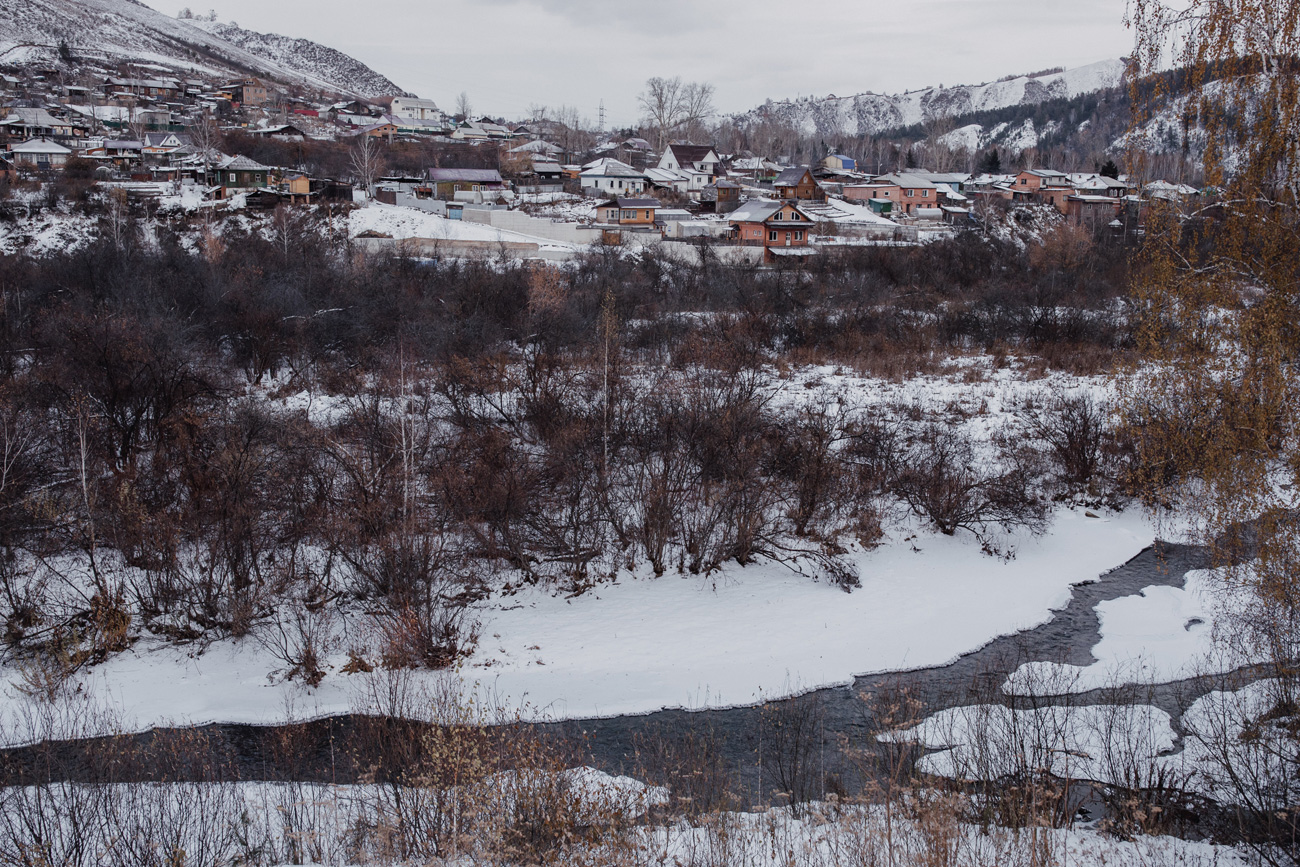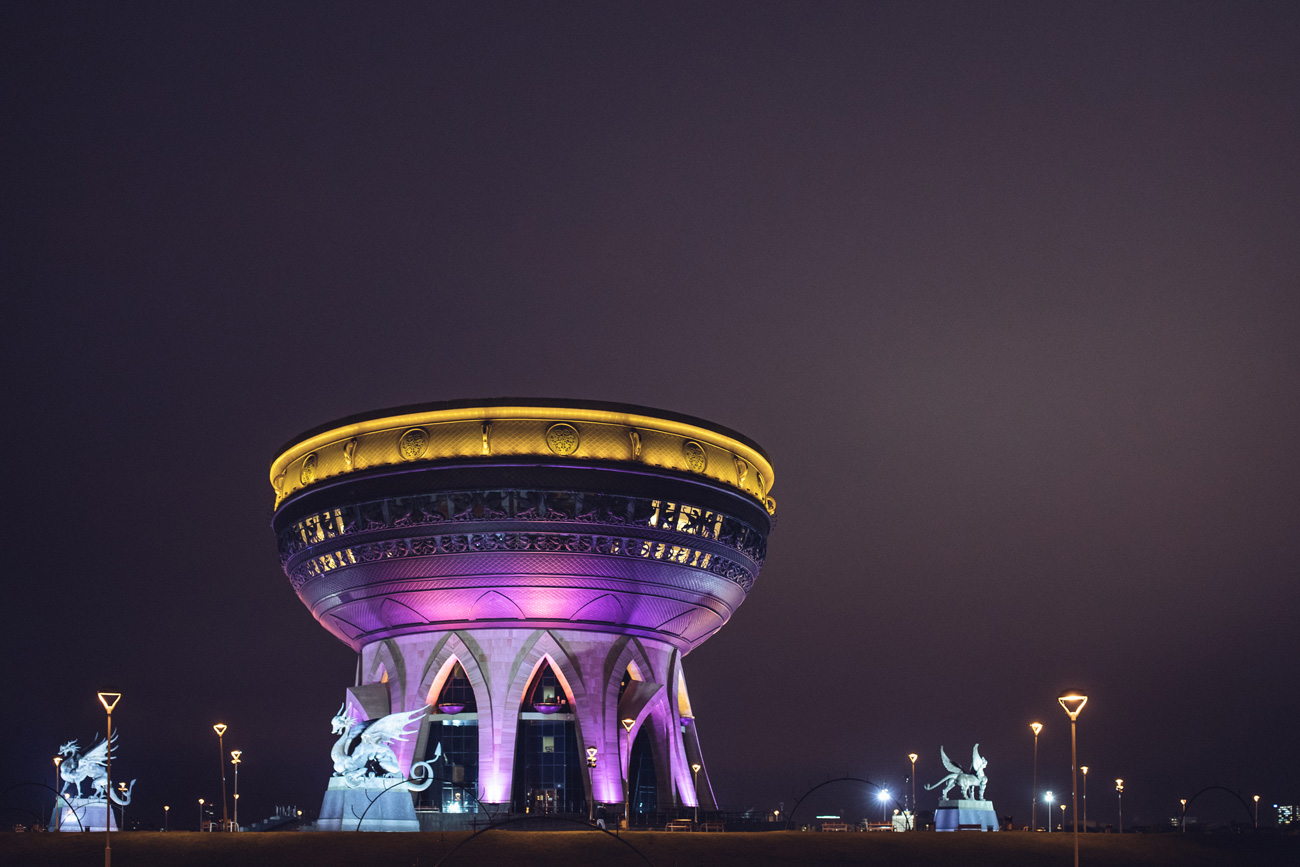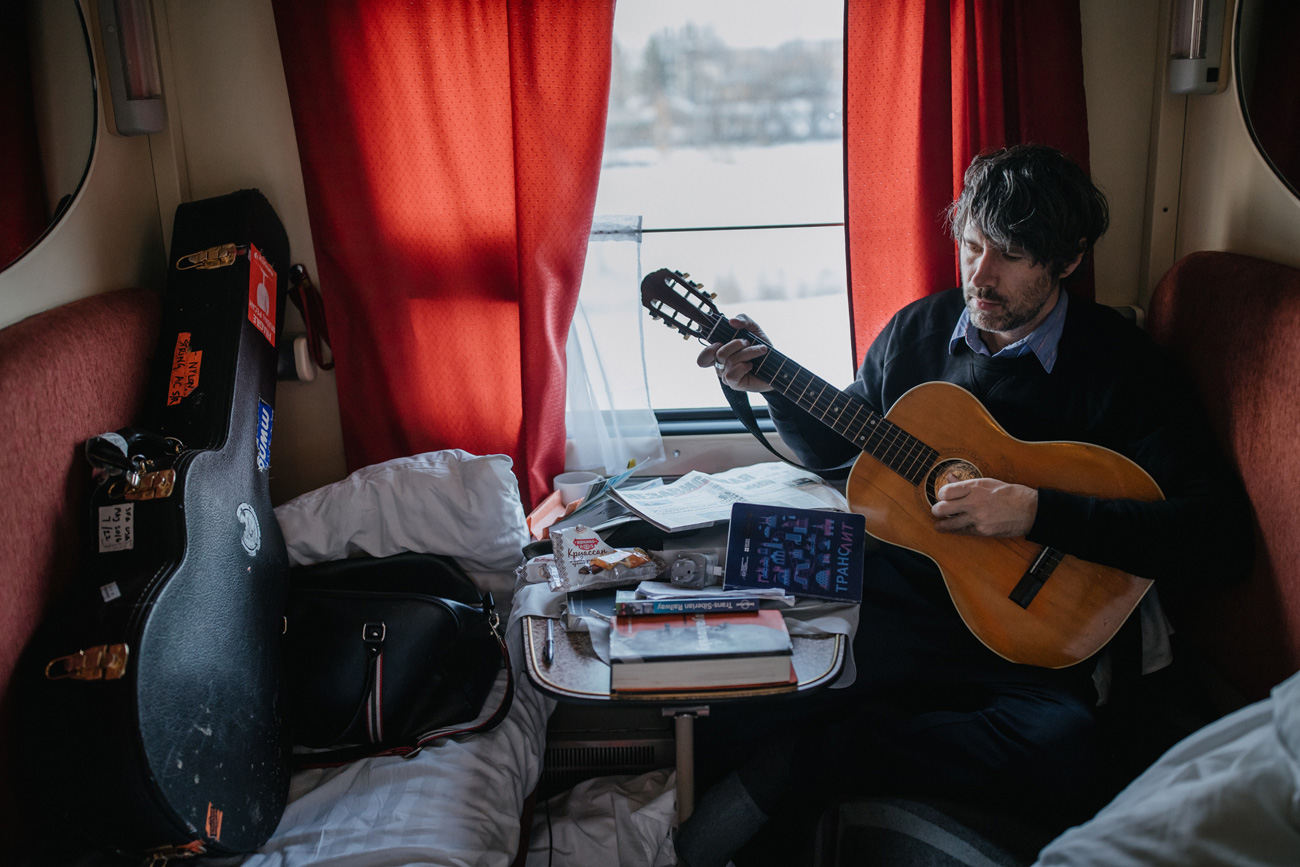British creatives inspired by Trans-Siberian Railway

Alisa Ganieva, Joe Dunthorne, Gruff Rhys, an interprener (right to left).
Max AvdeevOn Oct. 24, a group of British travelers and their guides, Russian writer Alisa Ganieva and literary critic Konstantin Milchin, stepped onto a train at Moscow’s Kazansky Railway Station to start their journey on the legendary Trans-Siberian Railway. The group was making the trip as part of the TransLit initiative, an artist-in-residence program sponsored by the British Council as part of the UK-Russia Year of Language and Literature. The group made stops in Kazan, the capital of Russia’s Republic of Tatarstan, in the Urals city of Yekaterinburg and at two cities in the center of Siberia – Novosibirsk and Krasnoyarsk, where they attended the Krasnoyarsk Book Culture Fair.
The tour ended on Nov. 7 with an evening of readings in Moscow, during which the British visitors shared their impressions of the trip. They all agreed it was the most fascinating journey they had ever taken.
Stickers inspired by Siberia
Andrew Dickson, a writer, critic and expert on Shakespeare, said that he was excited by many things during the “crazy” trip. In Yekaterinburg, the group took a tour of the gangster cemetery, where the visitors marveled that the city could have been the center of mafia wars in the 1990s. Dickson was asked to compare the city with one of Shakespeare’s plays, and he said without a doubt that the best comparison was Romeo and Juliet.
 Source: Max Avdeev
Source: Max Avdeev
Dickson also said he was impressed with the Russian-made mobile messenger app Telegram, which is known for its huge number of stickers. The options include the faces of famous people from Putin to the Romanovs and as well as emojis and animals. The writer said that he now uses this app exclusively for communication, and that he had some sticker suggestions of his own, if anyone wanted to design them. Dickson’s suggestions included an emoji expressing a fear of babushkas sitting on a bench and another admiring Krasnoyarsk’s enormous hydro-electric station even after you’ve been told it’s only the second-largest in the country.
The 'world’s saddest fox'
For the Nov. 7 evening, Joe Dunthorne, a poet and writer from Wales, prepared a performance inspired by the journey. During the trip, Dunthorne noticed that many cities had monuments to Soviet space exploration, so in his performance, he imagined he was taking a journey through space.
 Source: Max Avdeev
Source: Max Avdeev
Dunthorne’s capsule began in his kupe — his room on the train — with a countdown marked by scenes of the ceaseless view from the windows of the train.
 Source: Max Avdeev
Source: Max Avdeev
Dunthorne’s muses during the trip were not just Soviet space memoirs but also the “world’s saddest fox,” which the group saw in Novosibirsk. Dunthorne wrote a poem, “Anthony,” in honor of the fox. The author provided this excerpt:
Scientists in Novosibirsk
have sifted all aggression from Anthony,
the siberian fox. He now shivers
and whines at the back of his pen.
Visitors are invited to look into his eyes
and see the fear, learnt that a lack
is not the same as an attribute,
as he shapes his thin body into a perfect
replica of the darkest bottom left corner
of the room, underneath the ferret cage,
underneath the caypu, fat and at home
in his domesticity…
Dunthorne was also moved by the story of how Ivan the Terrible conquered the Tatar nation and their city, Kazan, in the 16th century. Dunthorne tried to imagine what this bloody tyrant did when he was alone in his poem “Ivan, Forgiven.”
During the quiet moments,
when the screams of the Tatars
had fallen to a murmur,
and the mosques’s eight minarets
burned in the distance
like votive candles,
and his soldiers snored on mink furs
around him, you have to wonder
whether Ivan thought of himself as terrible,
as though he were the very embodiment
of it, of terribleness…
Sounds of birch trees and herring under a fur coat
Gruff Rhys, the leader of the psychedelic rock band Super Furry Animals, composed songs inspired by the trip. One of the songs reenvisioned Mayakovsky’s poem “A Cloud in Trousers,” in what Rhys called an “original translation based on the 21st century fashion.” A second song was inspired by the pain people on trains shared and the famous Russian salad “herring under a fur coat,” which Rhys recharacterized as a fish “swimming in beet root shards.”
 Gruff Rhys. / Source: Max Avdeev
Gruff Rhys. / Source: Max Avdeev
Sound artist Francesca Panetta traveled with the group, recording the sounds of the railways, the trains and Siberia. On Nov. 7, Panetta, Dunthorne and Rhys performed a multimedia composition inspired by the silver birches that lined the railway. The performance featured music, sounds, singing and poem reading and accompanied by photos taken by photographer Max Avdeev throughout the journey.
In December, a special website featuring all the art inspired by the tour will go online along with a special video describing the journey.
Read more: Finding inspiration in a country you’ve never visited>>>
Subscribe to get the hand picked best stories every week
All rights reserved by Rossiyskaya Gazeta.
Subscribe
to our newsletter!
Get the week's best stories straight to your inbox